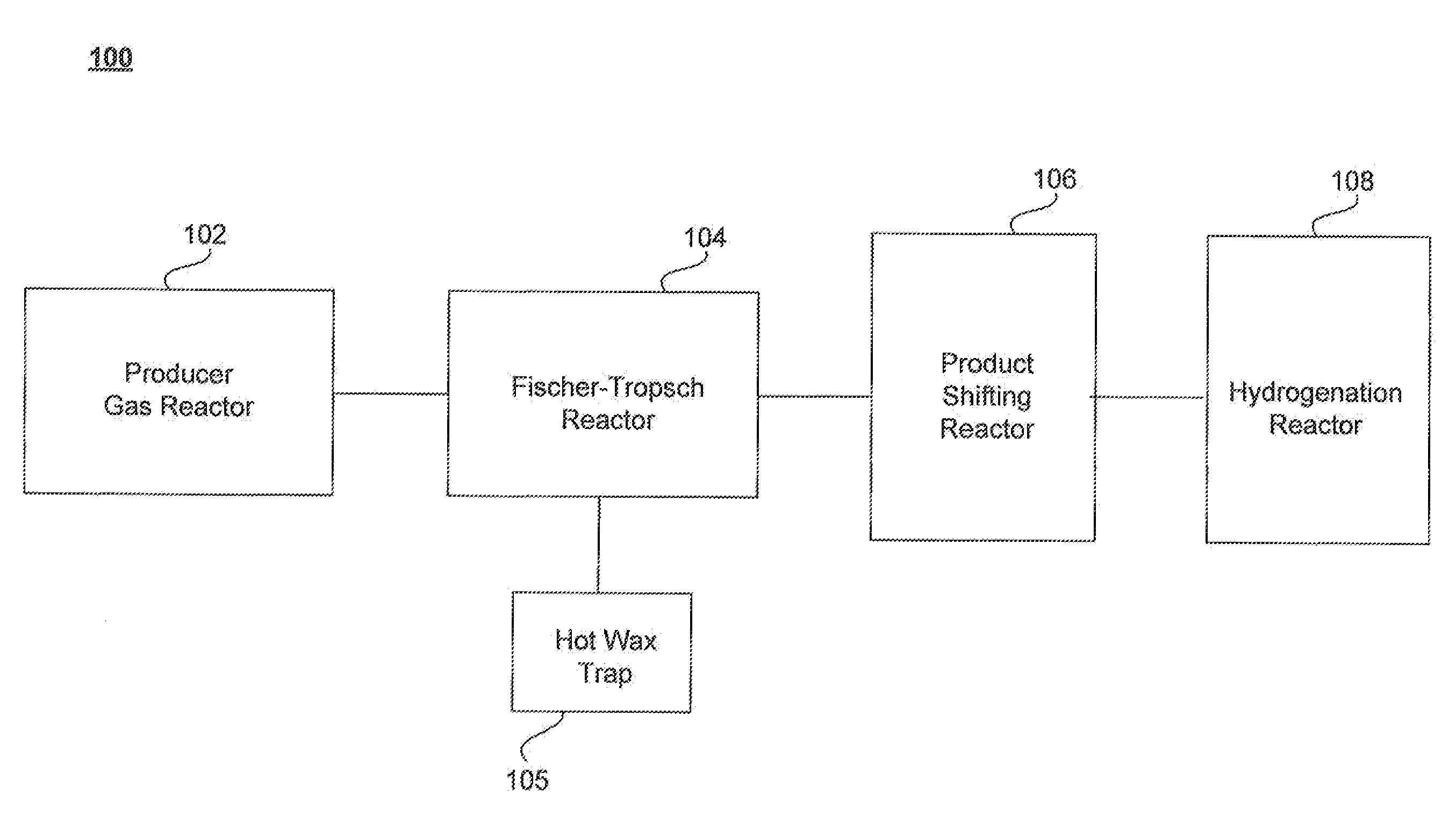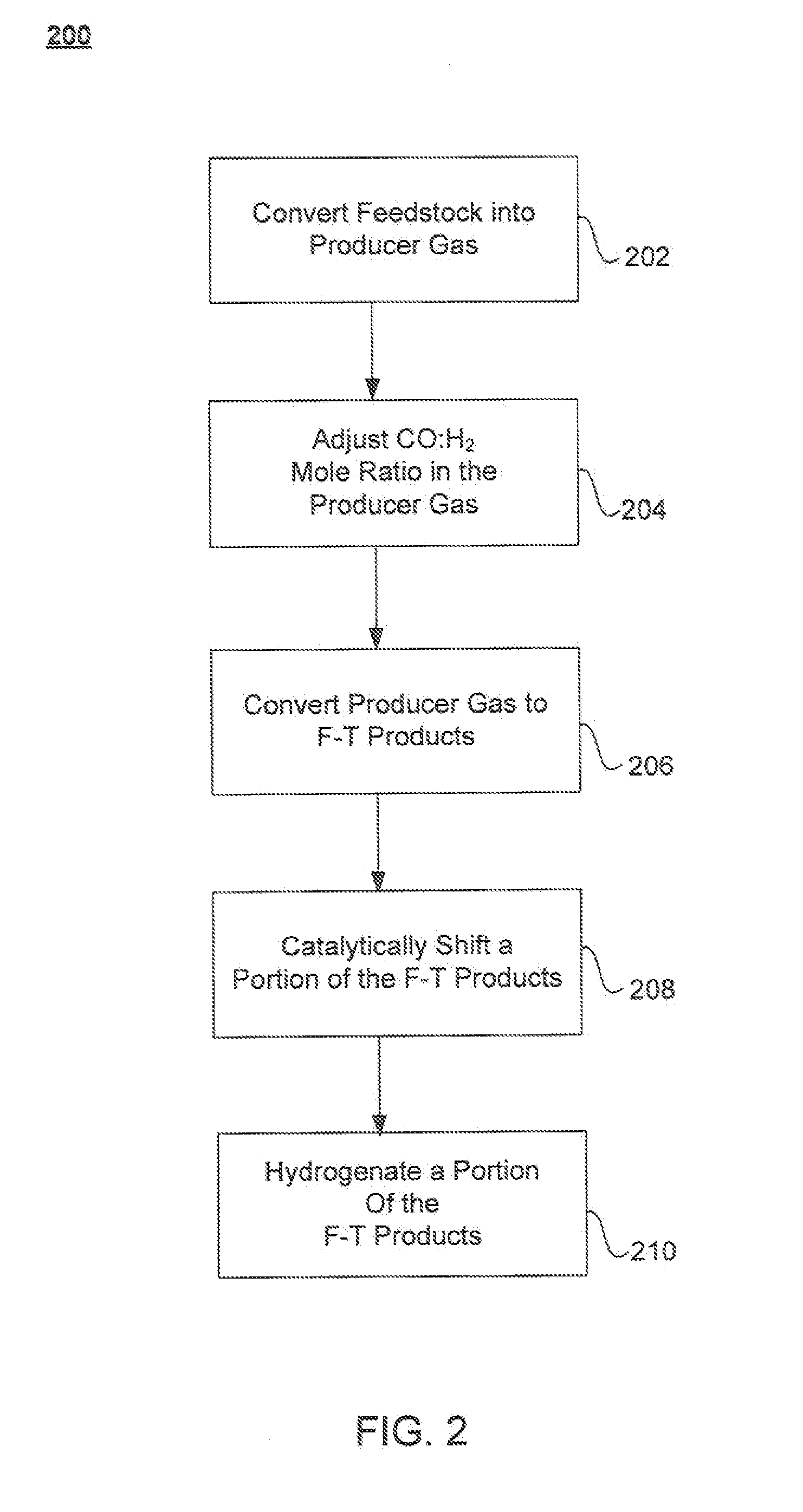Conversion of biomass feedstocks into hydrocarbon liquid transportation fuels
- Summary
- Abstract
- Description
- Claims
- Application Information
AI Technical Summary
Benefits of technology
Problems solved by technology
Method used
Image
Examples
Embodiment Construction
[0015]Methods and systems are described for converting carbon-containing feedstocks to fluid transportation fuels such as gasoline, diesel, and avaition fuel, among other transportation fuels. The carbon-containing feedstocks may include biomass (e.g., woodchips) that is gasified in the presence of air to make a producer gas that includes hydrogen (H2), carbon monoxide (CO), carbon dioxide (CO2), and nitrogen (N2). The nitrogen is largely supplied by the air, and may account for about 50 mol. % of the producer gas.
[0016]The producer gas may be sent directly to a Fischer-Tropsch reactor without first passing through an air separation unit to eliminate the free nitrogen. It has been surprisingly discovered that the free nitrogen in the producer gas does not interfere with the functioning of the Fischer-Tropsch catalyst, and can even stabilize the production rates of the F-T products by acting as a temperature moderator. The heat capacity of the free nitrogen can also allow larger diam...
PUM
| Property | Measurement | Unit |
|---|---|---|
| Temperature | aaaaa | aaaaa |
| Temperature | aaaaa | aaaaa |
| Pressure | aaaaa | aaaaa |
Abstract
Description
Claims
Application Information
 Login to View More
Login to View More - R&D
- Intellectual Property
- Life Sciences
- Materials
- Tech Scout
- Unparalleled Data Quality
- Higher Quality Content
- 60% Fewer Hallucinations
Browse by: Latest US Patents, China's latest patents, Technical Efficacy Thesaurus, Application Domain, Technology Topic, Popular Technical Reports.
© 2025 PatSnap. All rights reserved.Legal|Privacy policy|Modern Slavery Act Transparency Statement|Sitemap|About US| Contact US: help@patsnap.com



